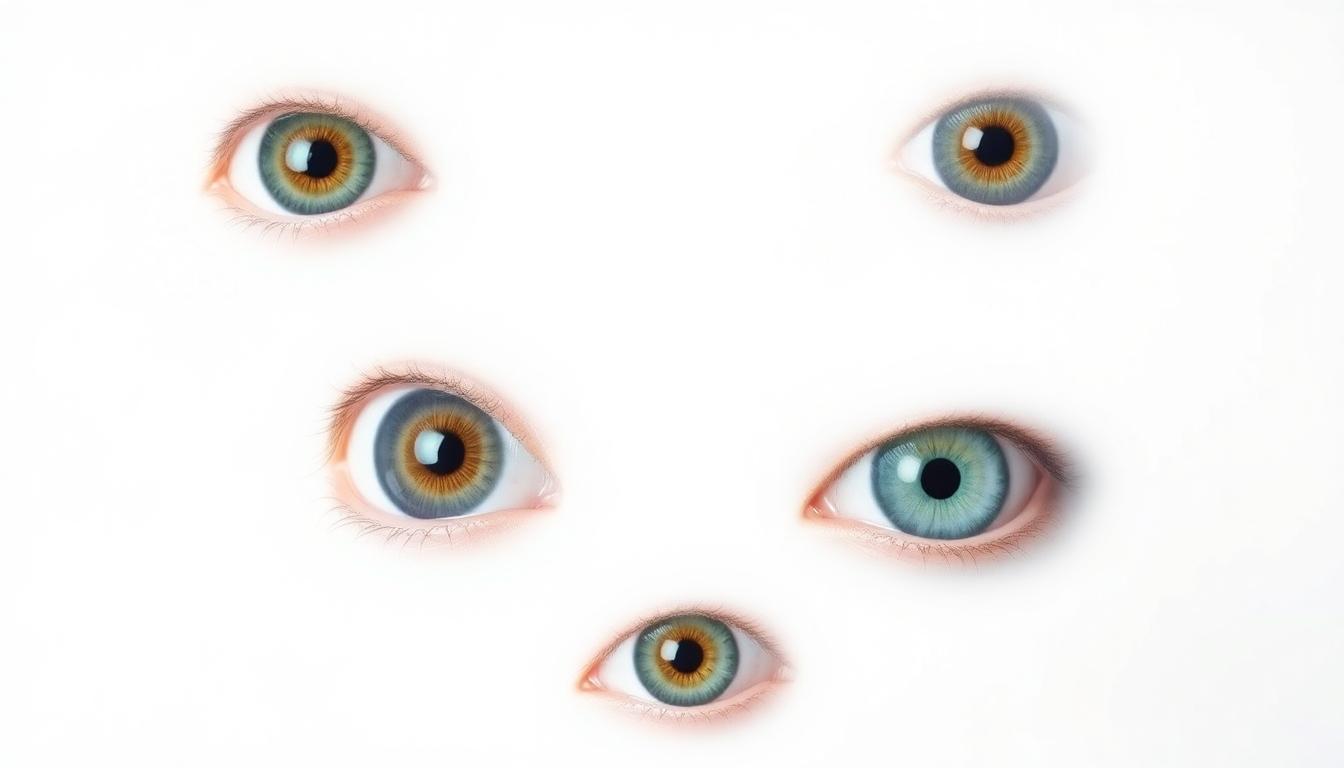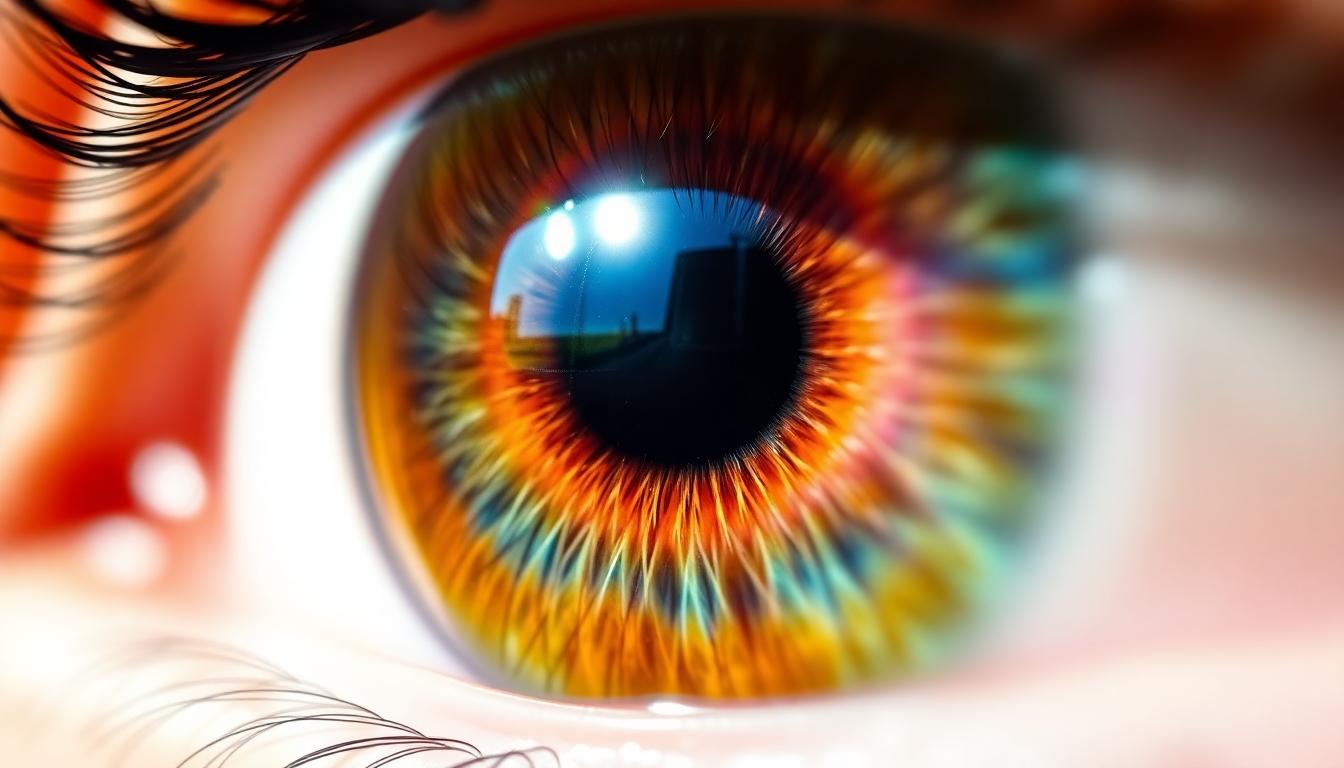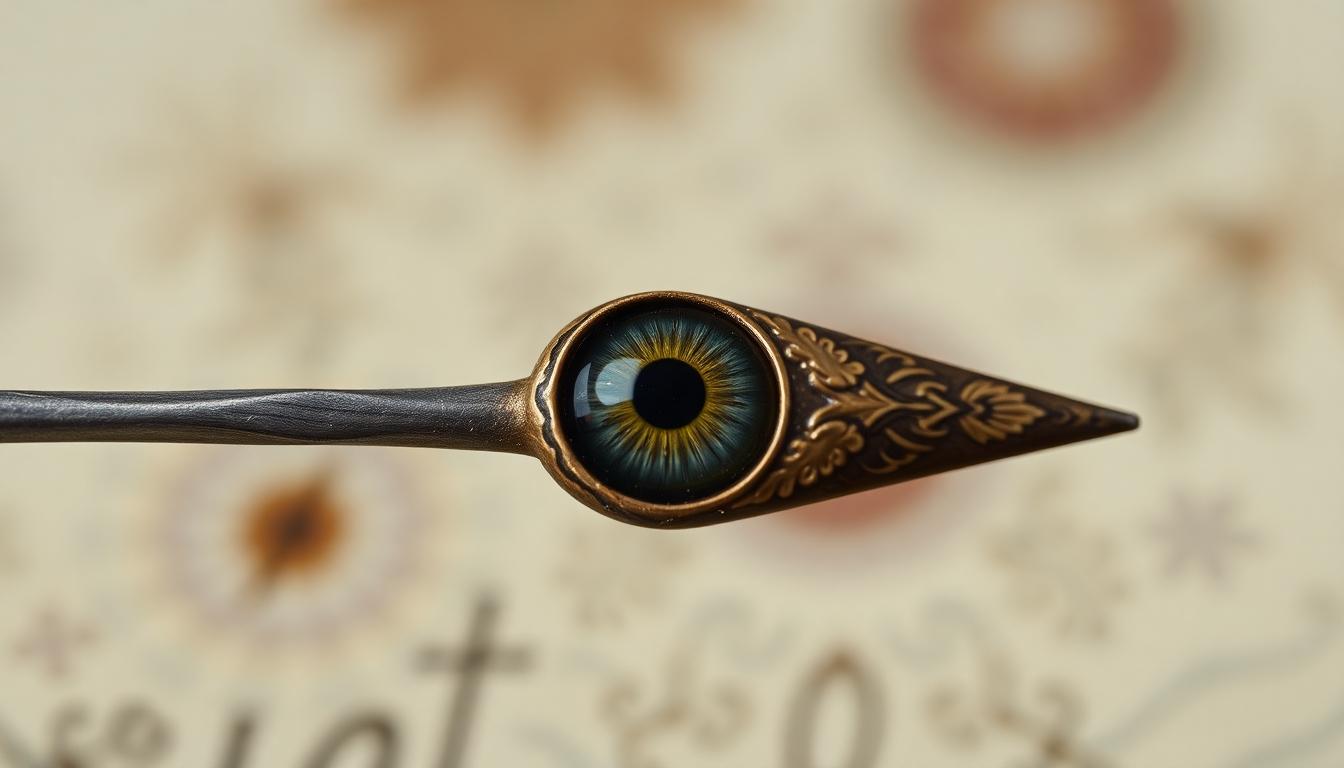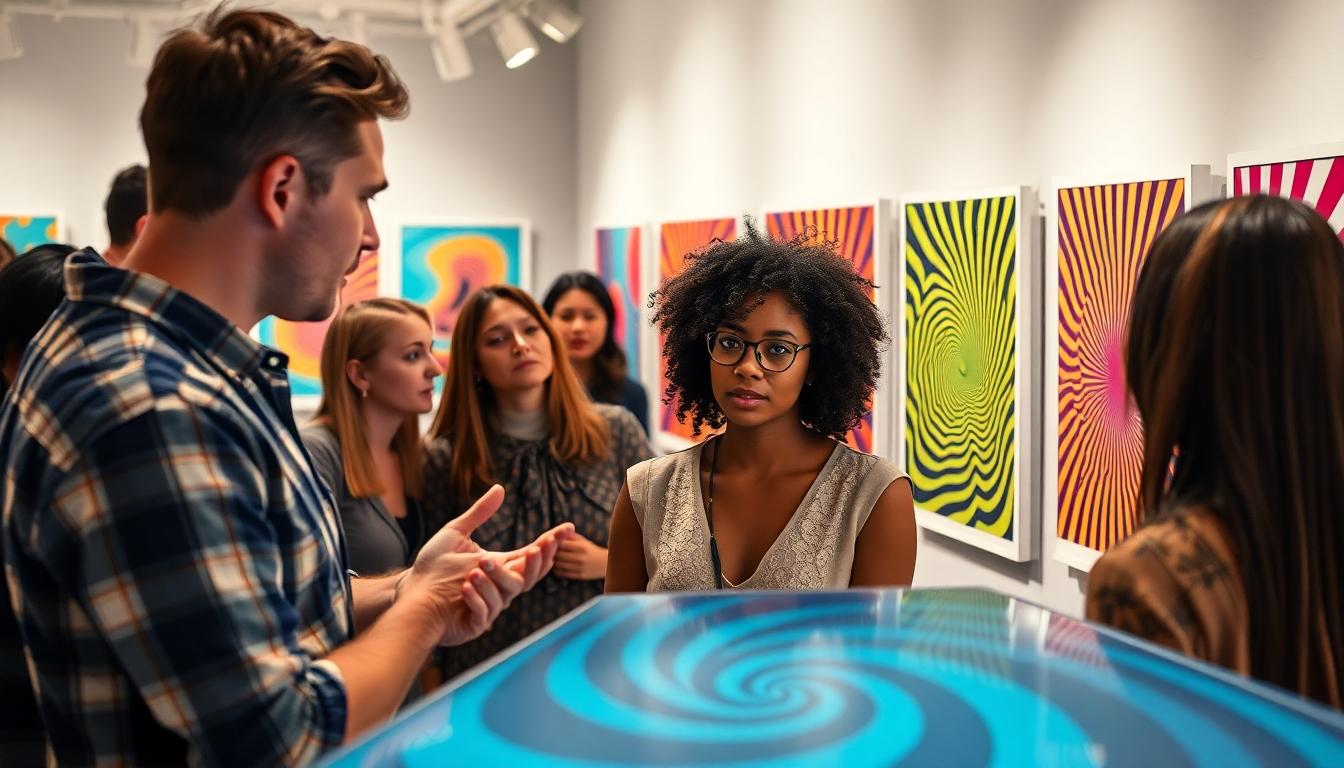Looking for a brain-teasing challenge that’ll sharpen your visual perception? Eye riddles are the perfect mental workout that combine cleverness with visual acuity. We’ve gathered some of the most intriguing optical puzzles that will test your ability to see beyond the obvious.
These visual brainteasers aren’t just fun—they’re also beneficial for keeping your mind active and improving your problem-solving skills. From hidden images to tricky patterns, eye riddles force us to look at things differently and think outside the box. Whether you’re a riddle enthusiast or just looking for an entertaining way to pass time, you’ll find these challenges both frustrating and rewarding.
The Ultimate Collection of Eye-Challenging Riddles
Classic Eye Riddles That Never Get Old
Ready to test your visual perception? These classic eye riddles have stood the test of time because they’re deceptively simple yet brilliantly challenging. Our favorite traditional eye teaser asks, “What has an eye but cannot see?” The answer is a needle! Another timeless riddle questions, “What has 4 eyes but can’t see?” It’s Mississippi, with each ‘i’ representing an eye. Many people scratch their heads over the riddle, “What kind of room has no doors or windows?” The answer is a mushroom! These classic brainteasers train our minds to think beyond literal interpretations and consider multiple meanings of words.
Modern Visual Puzzles to Boggle Your Mind
Visual perception challenges have evolved with technology, creating mind-bending new puzzles for today’s audiences. Popular social media platforms frequently feature images with hidden objects or optical illusions that generate millions of shares. Try this modern eye riddle: “What can you see once in a minute, twice in a moment, but never in a thousand years?” The letter ‘M’! Digital artists create complex visual paradoxes where objects appear impossible or contain hidden messages. Apps dedicated to visual puzzles now offer thousands of challenges that adapt to your skill level, providing endless entertainment while sharpening cognitive abilities.
Mathematical Eye Riddles That Combine Numbers and Vision
Mathematical eye riddles blend numerical concepts with visual perception for a uniquely challenging experience. Pattern recognition tests like “What number comes next: 1, 3, 6, 10, 15, ?” require both visual arrangement analysis and mathematical thinking (the answer is 21, as each number increases by consecutively larger numbers). Grid-based puzzles often ask you to identify relationships between shapes and their numerical values. Sudoku variants incorporate visual elements like colors or shapes alongside numbers. These mathematical eye riddles enhance both sides of your brain, strengthening connections between visual processing and logical reasoning centers.
Illustrated Riddles That Test Your Observation Skills
Detailed illustrations hide many visual clues that test your observation abilities. “Find the differences” challenges present two nearly identical images with subtle variations that require careful examination. Hidden object puzzles contain dozens of concealed items within a larger scene, training your brain to identify exact shapes within complex backgrounds. Ambiguous illustrations that can be interpreted in multiple ways (like the famous rabbit-duck illusion) challenge our visual perception assumptions. Regular practice with these illustrated riddles improves attention to detail and helps develop the skill of noticing what others miss.
Word-Based Eye Riddles That Play With Visual Language
Creative word riddles incorporate visual elements of language to create challenging puzzles. Rebus puzzles combine pictures, symbols, and letters to represent common phrases—like “STAND i” representing “I understand” (I under stand). Word searches with hidden messages form secondary patterns when certain letters are connected. Ambigrams demonstrate words that can be read from multiple angles or perspectives, challenging our visual processing of language. These word-based eye riddles highlight the fascinating connection between visual processing and language comprehension, making them excellent exercises for both creativity and cognitive flexibility.
10 Classic Eye Riddles That Will Test Your Visual Perception

- The Potato Riddle: “I have a hundred eyes but cannot see. What am I?” This classic riddle refers to a potato with its many “eyes” or growth buds.
- Brown-Faced Mystery: “I have eyes but I cannot see. I have a round brown face with…” The answer is a potato, which has multiple eyes but lacks vision.
- The Color Navigator: “I see through colors, and I see through light, I help you navigate the day and night.” Your eyes perform this essential function, allowing you to perceive the industry around you.
- Day and Night Vision: “I can see in the day and night, but when I’m closed, I lose my sight.” Our eyes adapt to different lighting conditions but cannot function when closed.
- Silent Observer: “I see everything, but never speak, you use me daily, but I don’t get weak.” Eyes witness our entire lives without uttering a word.
- The Delicate Lens: “I have a lens that helps you focus, but you can’t touch me, or I’ll be bogus.” Eyes contain natural lenses that are protected by reflexive blinking when approached.
- Colorful Windows: “I help you see the industry, but you cannot touch me, I can be different colors, but I’m always part of thee.” Eyes come in various iris colors while serving as our windows to reality.
- Emotional Viewers: “I can make you blink, or make you cry, I can see the stars and the sky.” Eyes respond to both physical stimuli and emotional states.
- Industry Observers: “I’m always open to the industry around, but when closed, there’s nothing to be found.” Our eyes must remain open to function as visual receptors.
- The Colored Iris: “I am often brown, blue, or green…” This riddle refers to eye iris color variations found across the human population.
Optical Illusions That Make You Question What You See
The Rotating-Tilted-Lines Illusion presents radial lines that appear to rotate clockwise or counterclockwise depending on viewing distance. Scientists have found this phenomenon demonstrates how illusory motion activates the same brain regions as actual movement. The Ghostly Gaze Illusion features twin figures whose eyes seem to follow you when viewed up close but appear to look at each other from a distance, exploiting our perception of eye direction.
Moiré patterns create compelling illusions of movement without any actual motion occurring. The Zollner Illusion makes parallel lines appear distorted when intersected by angled lines, challenging our brain’s interpretation of space. “My Wife and My Mother-in-Law” represents a famous bistable perception example where a single image can be seen as either a young woman or an elderly woman, but rarely both simultaneously.
Hidden Images That Reveal Themselves Over Time
The Afterimage Illusion works by having viewers stare at a light bulb briefly before shifting their gaze to a white surface, revealing a lingering inverse image as photoreceptors recover. The Snakes Illusion features static circles that appear to rotate due to our peripheral vision’s heightened sensitivity to motion cues.
Refraction illusions demonstrate how arrows placed behind glass appear reversed due to light bending through different mediums. Animal illusions use overlapping shapes that force our brains to identify multiple figures within a single image, highlighting our pattern-recognition abilities. The Teach Illusion presents mirrored words that only become legible after prolonged focus, challenging our brain’s adaptive visual processing.
7 Mathematical Eye Riddles to Sharpen Your Mind

Mathematical eye riddles blend visual perception with logical reasoning to create uniquely challenging puzzles. We’ve collected seven brain-teasers that will test both your mathematical thinking and visual acuity.
The Blue-Eyed Islander Conundrum
This famous logic puzzle involves a group of islanders who must determine their own eye color through deductive reasoning. On this island, people have either blue or brown eyes but cannot know their own eye color. When a visitor announces “at least one person has blue eyes,” a fascinating chain reaction begins. Each islander counts the number of blue-eyed people they see, and through recursive logic, all blue-eyed individuals figure out their eye color after exactly n days (where n equals the number of blue-eyed people). The beauty of this puzzle lies in its demonstration of higher-order thinking—each person must reason about what others know about what others know.
The Dice Riddle
“I have six faces, 21 eyes, but cannot see—what am I?” This classic riddle plays on mathematical properties and visual terminology. The answer is a standard die (or dice), where the “eyes” refer to the pips or dots on each face (1+2+3+4+5+6=21). This puzzle demonstrates how mathematical objects can be described using visual metaphors, creating an elegant connection between numbers and perception.
Moiré Pattern Challenges
These visual puzzles emerge when overlapping grids create fascinating illusory patterns. Try identifying the underlying structure when two transparent patterns overlap to create apparent movement or swirling effects. Our brains struggle to process these competing visual inputs, making these puzzles particularly challenging. Identifying the mathematical relationship between the overlaid patterns reveals the source of the illusion.
Recursive Deduction Puzzles
These mind-benders require analyzing what others know about what you know. Similar to the islander puzzle, these challenges involve multiple levels of “I know that you know that I know” reasoning. The solution often hinges on understanding common knowledge—information everyone knows everyone knows. Each night’s inaction provides new information, eventually triggering a decisive action when all variables become clear.
Penrose Triangle Paradoxes
Named after mathematician Roger Penrose, these geometric illusions present impossible objects that appear valid from a exact viewpoint. Determining why these structures cannot exist in three-dimensional space requires spatial reasoning and understanding of geometric principles. The challenge lies in identifying exactly where the visual deception occurs in what appears to be a continuous, connected shape.
Prime Number Visualizations
These puzzles present numerical patterns where prime numbers create visible anomalies among composite numbers. Try spotting the pattern when numbers are arranged in spirals or grids—prime numbers often form unexpected lines or clusters. These visualizations transform abstract number theory into tangible visual patterns, making mathematical properties literally visible to the eye.
Symmetry Breaking Challenges
These puzzles present seemingly symmetrical patterns with subtle asymmetries. Your task involves identifying where perfect symmetry breaks down within complex geometric arrangements. These challenges test both mathematical understanding of symmetry and visual precision, forcing your brain to process global patterns while detecting local inconsistencies.
8 Word-Based Eye Riddles That Play With Visual Language

Word-based eye riddles cleverly merge linguistic elements with visual perception, creating puzzles that challenge both your vocabulary and visual thinking. Here’s our collection of eight intriguing riddles that play with the concept of eyes and vision.
- Pronounced as One Letter, Written with Three
This riddle asks: “What am I?” The answer is “eye” – pronounced exactly like the letter “I” but spelled with three letters. The clever wordplay connects the organ of sight with its homophone.
- I’m Round, Colorful, and Help You See the Light
The answer here is “iris,” the colorful part of your eye that comes in various shades including brown, blue, and green. Your iris controls how much light enters your eye by adjusting the size of your pupil.
- I Sit in Your Head and Let You See
This straightforward riddle refers to “eyes,” our remarkable organs that process visual information and allow us to perceive our surroundings. Without them, we’d literally be in the dark.
- If I Am Holding a Bee, What Do I Have in My Eye?
The answer is “beauty” – playing on the phrase “beauty is in the eye of the bee-holder.” This pun transforms “beholder” into “bee-holder” for a clever visual and verbal twist.
- I Am Clear Like Glass, Help You See
“Cornea” solves this riddle, referencing the transparent, dome-shaped front part of your eye that helps focus light. Its glass-like clarity is essential for proper vision.
- I Blink, but I’m Not Alive
The answer is “eyelid,” which protects your eye by blinking regularly. This riddle personifies the eyelid by attributing the human action of blinking to a body part that moves automatically.
- I Have Lashes but No Whip
This refers to the “eye” with its protective eyelashes. The wordplay contrasts eyelashes with the lashes of a whip, creating a visual connection between two unrelated objects.
- I Sit on Your Face, but I’m Not a Nose
The answer is “glasses,” which aid vision while resting on your face. This riddle uses positioning to create misdirection, making you think of facial features before revealing the correct answer.
Ambigrams and Word Illusions
Ambigrams represent a fascinating intersection of visual art and language where words can be read from multiple perspectives. While not exclusively eye-related, these visual wordplays challenge our perception similarly to how eye riddles test our visual thinking. The word “eye” itself possesses natural symmetry that makes it particularly suitable for ambigram creation. Visual artists often incorporate eyes into ambigram designs to emphasize the theme of perception and viewpoint. These clever designs force readers to shift their perspective—sometimes literally turning the page upside down—to reveal alternative readings.
Letter-Based Visual Challenges
Letter-based visual challenges test our eye for detail and pattern recognition within text. These puzzles often involve finding hidden words by focusing on certain patterns or blinking to reveal concealed messages. Common examples include arrangements where letters create optical illusions that change meaning depending on viewing distance. Some challenges require readers to squint or adjust their focus to see words emerge from seemingly random characters. Visual designers frequently employ negative space between letters to form eye shapes or other visual elements that complement the textual message. These challenges demonstrate how our visual processing system can be tricked or trained to perceive different information from the same image.
5 Famous Eye Riddles From Around the World

Eye riddles have fascinated people across cultures for generations, challenging our perception and critical thinking abilities. These clever puzzles often use wordplay and dual meanings to test our mental agility.
Ancient Visual Puzzles That Still Baffle Experts
The needle riddle remains one of the most enduring eye-related puzzles throughout history. “What has one eye but cannot see?” cleverly refers to a needle’s eye—the small hole for thread—creating a visual metaphor that has challenged minds for centuries. Another timeless puzzle asks, “I see the industry, yet I cannot move. I come in a pair, and I always prove. What am I?” with the answer being our eyes themselves, highlighting their immobile nature even though their crucial role in perception. These ancient riddles demonstrate how visual perception challenges have entertained and educated people long before modern entertainment existed.
Cultural Eye Riddles and Their Origins
Eye-related riddles reflect deep cultural values about perception and awareness across different societies. “I work hard all day to shift your gaze, You never see me, but I earn your praise. What am I?” points to eye muscles—the unsung heroes of vision that work tirelessly without recognition. The humorous riddle “What did the left eye say to the right eye?” with its answer “Between us, something smells” showcases how these puzzles often incorporate facial anatomy for comedic effect. Cultural eye riddles frequently employ wordplay related to sight and perception, transforming ordinary observations into sophisticated cognitive challenges that have been shared and adapted through generations. These riddles demonstrate humanity’s long-standing fascination with visual perception and the eyes’ symbolic importance in understanding our industry.
6 Modern Eye Riddles From Social Media That Went Viral

Social media platforms have become breeding grounds for viral eye riddles, challenging users with clever wordplay and visual puzzles. These modern brainteasers have captivated millions across Instagram and TikTok, sparking debates and collaborative solving efforts.
Instagram’s Most Challenging Visual Tests
Instagram’s viral eye riddles focus primarily on complex visual perception challenges that embed eye symbolism within layered imagery. Users encounter puzzles designed to create “Aha!” moments through clever misdirection, such as camouflaged letters or illustrations with dual meanings. Many posts feature optical illusions where hidden objects or patterns must be discovered, testing viewers’ ability to see beyond the obvious. These visual tests often exploit linguistic ambiguities, requiring lateral thinking to interpret “eye” homophones like “I” or “aye” within symbolic representations. Popular formats include puzzles where the solution relies on noticing subtle details or reinterpreting common symbols in unexpected ways, making these tests particularly captivating for social sharing.
TikTok Eye Riddles That Divided the Internet
TikTok’s riddle network thrives on short-form challenges that leverage puns and quick engagement techniques. The platform’s most viral eye riddle—”What has one eye but can’t see?”—sparked heated debates over interpretations, with answers ranging from needles and potatoes to hurricanes. Content creators maximize engagement by designing riddles with ambiguous answers, encouraging users to defend their answers in comment sections. Videos tagged with #2025riddles specifically target family-friendly audiences seeking quick mental challenges. TikTok’s algorithm amplifies these puzzles through strategic hashtag use, with the platform’s audio-driven format making these riddles particularly shareable. Classic eye riddles receive modern makeovers on TikTok, incorporating pop-culture references or meme-inspired twists that refresh traditional brainteasers for contemporary audiences.
How to Create Your Own Eye Riddles

Crafting your own eye riddles can be both fun and intellectually stimulating. We’ve compiled effective techniques to help you develop captivating puzzles that will challenge and entertain others.
Identify Dual-Meaning Terms
Focus on terms with multiple interpretations, particularly those related to “eye,” “i,” or “see.” Words with homonyms make excellent starting points for creating clever riddles. Try listing all the possible interpretations of eye-related terms to generate puzzle ideas. Examples include exploring the difference between the literal eye organ and the letter “i” or examining objects with eye-like features.
Leverage Object Features
Objects with holes, markings, or symbolic “eyes” provide rich material for riddles. Potatoes with their sprouting “eyes” make classic riddle subjects that most people can relate to. Hurricane “eyes,” peacock feathers, and needles also contain natural eye elements perfect for puzzles. The key is finding objects where the eye component is distinctive yet not immediately obvious in a riddle context.
Incorporate Wordplay
Combine “eye” with other homonyms or idioms to create layers of meaning in your riddles. A riddle like “I’m an eye in the sky but never blink” could refer to a drone camera or satellite. Puns work exceptionally well, such as playing with “private eye” for detective-themed puzzles. Consider incorporating mathematical concepts like the imaginary number “i” paired with “pie” (π) for more advanced riddles.
Test for Clarity
Ensure your solution logically connects to the “eye” element in your riddle. Ask friends to solve your creation to verify it strikes the right balance between challenge and solvability. A well-crafted eye riddle like “What has an eye but no head?” (Answer: a needle) demonstrates perfect clarity even though its deceptive simplicity. Remember that the best riddles often elicit an “aha!” moment when solved.
Follow Best Practices
Prioritize brevity over complexity when wording your riddles. Overly complicated riddles tend to frustrate rather than engage. Use familiar objects or concepts to make your riddles accessible to a wider audience. The verification process is crucial—getting feedback helps refine your riddle’s wording and ensures the solution follows logical reasoning that others can follow.
Scientific Explanations Behind Why Eye Riddles Trick Our Brains

Paradoxical Logic Challenges
Eye riddles featuring paradoxical logic exploit our brain’s systematic reasoning processes in fascinating ways. The famous Blue-Eyed Islanders riddle demonstrates how a seemingly simple statement can trigger a complex chain of deductive reasoning. This particular puzzle works by requiring each person to observe others’ behaviors while making inferences about their own situation. Our brains struggle with this type of recursive thinking because we naturally prioritize direct observation over indirect inference. When solving these types of riddles, we’re forced to consider multiple perspectives simultaneously—a process that often leads to cognitive strain and makes the solution elusive.
Blind Spot Exploitation
Many eye riddles take advantage of the physical limitations of our visual system, particularly our blind spots. These natural gaps in our visual field exist where the optic nerve connects to the retina, creating an area without photoreceptors. The classic blind spot experiment demonstrates this perfectly—when focusing on one circle with a single eye, another circle can completely disappear from view. This disappearance occurs because the image falls precisely on the blind spot area. Visual puzzles frequently leverage this physiological quirk to create illusions that seem impossible until we understand the underlying mechanism.
Intuition Versus Analytical Thinking
Research by Yale SOM’s Shane Frederick reveals that eye riddles highlight the constant battle between our intuitive and analytical thinking systems. Our brains automatically default to quick, intuitive responses when faced with visual challenges. These instinctive reactions often lead us astray in solving eye riddles because they trigger impulsive assumptions rather than methodical analysis. The most effective eye riddles deliberately activate our intuitive thinking while requiring analytical reasoning for their solution. This cognitive dissonance creates the satisfying “aha” moment we experience when finally understanding the trick behind the riddle.
Perceptual Organization Principles
Eye riddles frequently manipulate principles of perceptual organization that govern how we interpret visual scenes. Our brains automatically group visual elements based on proximity, similarity, and continuity—processes that normally help us make sense of our environment. Clever riddles subvert these organizational principles by presenting scenarios where our automatic grouping leads to incorrect interpretations. Visual illusions that make straight lines appear curved or stable objects seem to move demonstrate how our perception can be systematically manipulated when these organizing principles are cleverly exploited.
Processing Limitations and Cognitive Load
The effectiveness of many eye riddles stems from overwhelming our visual processing capacity. Our brains can only handle a limited amount of visual information simultaneously. When riddles present complex visual scenarios, they create cognitive load that forces our brains to prioritize certain elements while ignoring others. This selective attention explains why we miss obvious details in “find the difference” puzzles or overlook alternative interpretations in ambiguous images. By strategically increasing cognitive load, eye riddles exploit these processing limitations to conceal their answers in plain sight.
Conclusion: Why Eye Riddles Remain Popular in the Digital Age
Eye riddles continue to captivate minds across generations because they tap into our innate desire to solve puzzles while training our visual perception. From ancient cultural brainteasers to viral social media challenges these visual games offer more than entertainment.
We’ve seen how these clever challenges work on multiple levels captivating both our analytical and creative thinking processes. They’re accessible yet challenging offering that perfect balance that keeps us coming back for more.
Whether you’re solving traditional riddles marveling at optical illusions or creating your own visual puzzles the journey of discovery is what makes eye riddles so enduring. They remind us that sometimes we need to look beyond what’s immediately visible to find the true solution.
Frequently Asked Questions
What are eye riddles?
Eye riddles are visual brainteasers that challenge your perception, observation skills, and cognitive abilities. They combine visual elements with wordplay, logic, or mathematical concepts to create puzzles that require careful looking and thinking. These riddles can range from classic optical illusions to modern social media challenges, all designed to enhance visual acuity and problem-solving skills.
How do eye riddles benefit cognitive development?
Eye riddles enhance problem-solving abilities, boost visual perception, and encourage creative thinking. They improve pattern recognition, attention to detail, and spatial reasoning. Regular engagement with these puzzles strengthens connections between visual processing and analytical thinking. These riddles also provide a fun way to exercise your brain, potentially delaying cognitive decline and improving mental flexibility across different contexts.
What types of eye riddles are most popular?
The most popular eye riddles include classic visual brainteasers (like the needle and mushroom riddles), hidden object challenges, optical illusions, mathematical visual puzzles, “find the differences” games, and word-based visual riddles like rebuses. Social media platforms have popularized new formats that combine technological elements with traditional concepts. Cultural riddles with regional significance and viral challenges on platforms like Instagram and TikTok are also widely enjoyed.
Why do optical illusions trick our brains?
Optical illusions exploit the gap between what we see and how our brain interprets visual information. They take advantage of paradoxical logic, blind spots in our visual processing system, and the tension between intuitive and analytical thinking. Our brains use shortcuts based on perceptual organization principles (like proximity and similarity) to make sense of visual input, but these shortcuts can be manipulated, creating the illusions that make eye riddles so challenging.
How difficult are mathematical eye riddles?
Mathematical eye riddles vary in difficulty based on the complexity of both the visual elements and the mathematical concepts involved. Beginners may enjoy simple counting or pattern-recognition puzzles, while advanced solvers might tackle challenges involving geometry, spatial reasoning, or complex numerical sequences. The beauty of these riddles is that they blend logical reasoning with visual perception, making math more accessible and engaging for many people.
Can eye riddles improve observation skills?
Yes, eye riddles significantly improve observation skills by training your brain to notice subtle details, patterns, and inconsistencies. Regular practice helps develop a more methodical approach to visual analysis, enhances peripheral awareness, and improves your ability to distinguish between similar objects. These enhanced observation skills often transfer to everyday activities, helping you notice details that others might miss.
How can I create my own eye riddle?
To create your own eye riddle, start with a clear concept or solution, then work backward to design the visual puzzle. Use ambiguity strategically but ensure the puzzle remains solvable. Incorporate familiar elements in unexpected ways, test your riddle on others to gauge difficulty, and refine it based on feedback. The best riddles provide just enough information to be solved while creating that satisfying “aha!” moment of discovery.
Are eye riddles culturally specific?
Yes, many eye riddles contain cultural references that may be easier for people from certain backgrounds to understand. Different cultures have developed unique approaches to visual puzzles based on their linguistic features, artistic traditions, and common experiences. Famous eye riddles from around the world often incorporate region-specific wordplay, symbols, or concepts. However, the universal principles of visual perception mean that many eye riddles can cross cultural boundaries with minimal adaptation.







